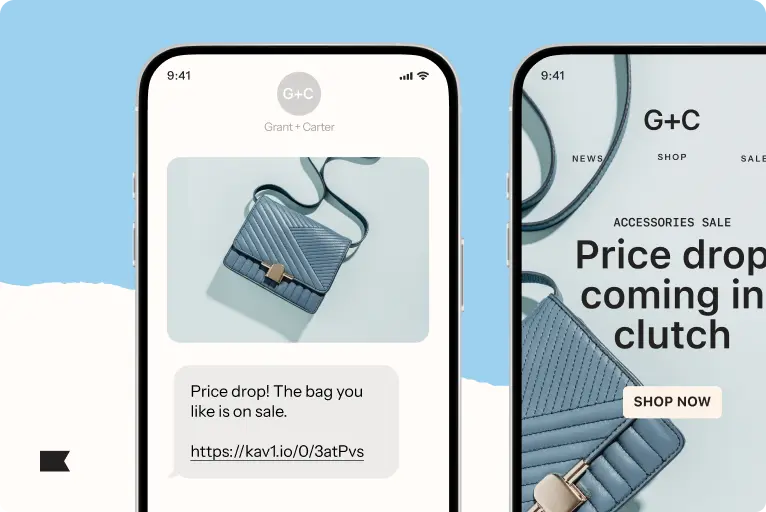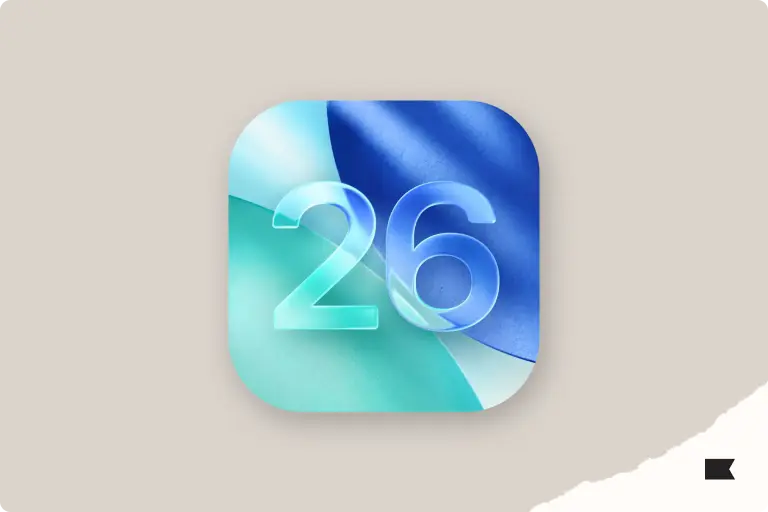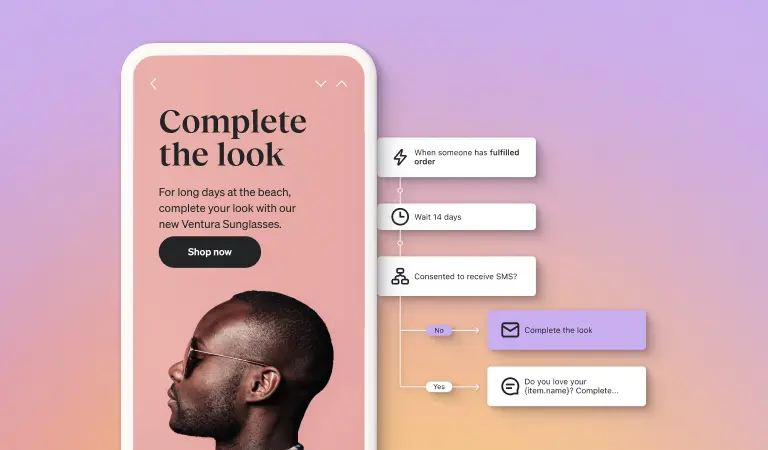
European SMS marketing data report: 100+ statistics to use in your 2025 strategy
You might not be texting your European customers enough, according to our survey of over 5,000 shoppers in 13 European countries.
SMS marketing has become more popular across the globe in recent years—but does this channel resonate across cultures?
Klaviyo recently teamed up with subscription and recurring payments platform Recharge in a SMS consumer survey to find out:
- How text messages influence people to buy products
- The types of text messages people want from brands
- How brands can get the most out of their SMS marketing strategy
To meet our research criteria, survey respondents needed to:
- Subscribe to SMS marketing from at least one brand
- Conduct at least half their shopping online
- Shop online at least twice a month
The full report covers 8,781 individuals across Europe, North America, and Asia-Pacific (APAC)—and 5,160 of those respondents lived in Europe.
In this article, we’ll dive into the stats specific to the European market to help brands tailor their marketing based on a subscriber’s country.
Top SMS marketing stats: SMS speeds up time to purchase
While consumers generally tend to prefer email over SMS, the data is clear about one thing: a phone number is an extremely lucrative piece of data for brands to collect.
Here are a few top findings from our research that prove the point:
74% of European shoppers have made a purchase after receiving a text from a brand. That’s slightly more than the global average of 72%.
Europeans are the most likely to have made an SMS purchase 4-5 times in the last year (23% of consumers) compared to 18% of consumers for North America and 17% for APAC.
67% of Europeans who made an SMS purchase in the last year said it was something they were planning to buy in the near future or in a few months—and they ended up buying the item earlier than they planned to because of a promotional text message.
13% of Europeans made a purchase after they got a text when they weren’t thinking about buying at all.
SMS list growth: how to get more subscribers
Discounts drive SMS sign-ups. But it’s also not that simple.
When we compare what people say would make them more likely to subscribe to SMS to why they actually sign up, it seems like brands can circumvent discounts if people are already loyalists.
In fact, compared to North American and APAC responders, Europeans were more likely to want personalised SMS marketing and slightly less focussed on discounts.
The stats back this: 35% of Europeans say personalised messages increase likelihood to subscribe, vs only 29% US and 31% APAC. 56% of Europeans say discounts increase the likelihood they’ll subscribe—which is high, but notably lower than the 63% of Americans and 66% in APAC.
The importance of offering SMS sign-up options at check-out and in post-purchase email flows becomes obvious when you consider that 62% of people are more likely to subscribe to SMS after they’ve made a purchase—up from 50% in 2022.
What increases the likelihood of subscribing to SMS
- Being offered a discount: 56%
- Being able to ask questions and receive fast responses via text message: 38%
- Being offered a unique product or experience: 38%
- Personalised messages: 35%
- Knowing there’s a person on the other end of the message: 30%
- Being able to communicate with favourite brands via text message: 29%
- Being able to edit or update an upcoming subscription order: 27%
- Being able to repeat purchase via text message (without providing payment info): 24%
- Being able to repeat purchase via text message by providing payment: 21%
Why people actually sign up for SMS
- It’s a brand they love: 39%
- They’re about to make a purchase and want to get a discount: 36%
- They want to get messages about their order status: 36%
- They purchase from the brand frequently: 36%
- It’s a brand they want to purchase from when there’s a sale: 33%
- They want early access to sales or new products: 32%
- They want notifications when specific products are on sale or back in stock: 30%
- They want reminders about upcoming orders or appointments: 28%
- It’s a brand they spend a lot of money on: 26%
- They want to stay up-to-date on the latest news: 26%
- They want to edit or update their upcoming subscription order without logging in to their account: 22%
SMS communication preferences: frequency and time of day
If you’ve ever been afraid you’re sending too many text messages, odds are you’re not.
While you still need to be mindful of frequency—57% of Europeans said they unsubscribe from SMS because they receive too many messages—72% are willing to receive a text at least once a week, and almost half of those (46%) are willing to receive a text more than once a week.
This is why Klaviyo recommends sending text messages regularly once you start—if you don’t, your subscribers may forget why they signed up in the first place and end up unsubscribing.
Acceptable SMS frequency from brands
- Once a day: 12%
- A few times a week: 34%
- Once a week: 27%
- A few times a month: 16%
- Once a month or less: 11%
When to send text messages to convert subscribers
Your SMS marketing strategy is about quick communication and, ideally, fast conversion. This is why, unlike other “always on” marketing channels, send time really, really matters with SMS.
But send time doesn’t just matter for conversion—it also matters for compliance. So even though most people (45%) make purchases via SMS in the evening, brands must keep quiet hours in mind.
Quiet hours vary across Europe. In the UK, brands cannot send SMS marketing messages after 8:00 pm or before 9:00 am. In France, brands are restricted from sending texts between 10:00 pm and 8:00 am, plus all day on holidays and Sundays. Sending based on time zone can help you stay compliant.
With all that in mind, here’s when people are most likely to make a purchase via SMS:
- Evening: 45%
- Afternoon: 27%
- Midday: 13%
- Morning: 9%
- Late night hours: 7%
And here’s what people are most likely doing when they make that SMS purchase:
- Watching TV: 49%
- Having a snack or drinking a beverage: 29%
- Commuting: 8%
- Working: 6%
- Doing something else: 4%
- Cooking: 3%
SMS message types: what people want to receive…and what they don’t
In general, the types of text messages people want to receive from brands can be broken down into 3 categories:
Transactional SMS messages, such as order confirmations, shipment and delivery confirmations, back-in-stock notifications, and product subscription reminders
Fast responses, unique-to-them experiences, birthday deals, and other personalised messages
Discounts and sales
Top 5 SMS messages people want to receive more often
- Shipment and delivery confirmations: 48%
- Coupons or promotional codes: 42%
- Order confirmations: 37%
- Birthday deals: 37%
- Promotion and sales announcements: 31%
Top 5 SMS messages that make people feel part of an exclusive group
- Birthday deals: 33%
- Loyalty program offers and benefits: 31%
- Early access to sales, product drops, and other VIP experiences: 30%
- Coupons or promotional codes: 31%
- Promotion and sales announcements: 26%
Top 5 SMS messages people want to receive less often
- Abandoned cart reminders: 35%
- Low inventory alerts: 32%
- Messages based on actions taken: 31%
- Interesting or helpful content with no sales component: 29%
- New product announcements: 29%
What makes people unsubscribe from SMS?
- Receiving too many messages: 57%
- Receiving the same message too many times: 54%
- Messages that don’t have a purpose: 49%
- Receiving messages on topics or products they’re not interested in: 42%
- Messages that don’t seem intended for them: 41%
- Receiving the same message by email and SMS: 33%
- Receiving messages at inappropriate times: 32%
- Only receiving messaging regarding discounts and sales: 18%
SMS subscription and conversion rates: how SMS influences brand loyalty
Our research found that brand loyalty and SMS engagement reinforce each other: while 39% of respondents have signed up for SMS because they love a particular brand, 59% are more likely to engage with a brand when they’re subscribed to SMS.
Number of brands people are subscribed to via SMS
- 1 brand: 12%
- 2-3 brands: 45%
- 4-5 brands: 29%
- 6-7 brands: 8%
- 7+ brands: 7%
Frequency of purchasing in the past year after a text
- Once: 13%
- 2-3x: 54%
- 4-5x: 23%
- More than 6x: 9%
Email and SMS: segmenting based on preferred channel
While 37% of European shoppers find receiving the same message via email and SMS to be very helpful, another 27% say it depends on the message.
This is why an integrated email and SMS strategy is so important—because people have different channel preferences for different types of messages.
Here’s how those preferences break down:
- Shipment and delivery confirmations: 29% SMS vs. 45% email
- Birthday deals: 24% SMS vs. 45% email
- Order confirmations: 21% SMS vs. 53% email
- Coupons or promotional codes: 22% SMS vs. 48% email
- Back-in-stock notifications: 21% SMS vs. 43% email
- Early access to sales, product drops, and other VIP experiences: 21% SMS vs. 44% email
- Promotion and sales announcements: 20% SMS vs. 45% email
- Edit or update an upcoming subscription order: 20% SMS vs. 48% email
- Product subscription reminders: 19% SMS vs. 46% email
- Loyalty program offers and benefits: 18% SMS vs. 48% email
- Low inventory alerts: 18% SMS vs. 36% email
- Abandoned cart reminders: 16% SMS vs. 38% email
- Special announcements like upcoming events: 17% SMS vs. 45% email
- Messages based on actions: 17% SMS vs. 41% email
- New product announcements: 15% SMS vs. 45% email
- Interesting or helpful content with no sales component: 15% SMS vs. 43% email
SMS marketing statistics by country
So far, we’ve been looking at consumer data across 13 different countries in Europe. But if your audience is more heavily based in specific regions, you might prefer to see more specific data by country.
Austria
- 84% are okay with the brands they love most texting them once per week or more
- 69% have made a purchase after getting a text message from a brand
- 49% are more likely to opt into SMS after making a purchase
- 61% say getting a discount would make them more likely to subscribe to SMS
- 17% have bought something unplanned from a text
Belgium
- 69% are okay with the brands they love most texting them once per week or more
- 61% have made a purchase after getting a text message from a brand
- 52% are more likely to opt into SMS after making a purchase
- 65% say getting a discount would make them more likely to subscribe to SMS
- 14% have bought something unplanned from a text
Denmark
- 63% are okay with the brands they love most texting them once per week or more
- 71% have made a purchase after getting a text message from a brand
- 47% are more likely to opt into SMS after making a purchase
- 61% say getting a discount would make them more likely to subscribe to SMS
- 14% have bought something unplanned from a text
Finland
- 60% are okay with the brands they love most texting them once per week or more
- 72% have made a purchase after getting a text message from a brand
- 45% are more likely to opt into SMS after making a purchase
- 66% say getting a discount would make them more likely to subscribe to SMS
- 10% have bought something unplanned from a text
France
- 63% are okay with the brands they love most texting them once per week or more
- 70% have made a purchase after getting a text message from a brand
- 57% are more likely to opt into SMS after making a purchase
- 71% say getting a discount would make them more likely to subscribe to SMS
- 21% have bought something unplanned from a text
Germany
- 86% are okay with the brands they love most texting them once per week or more
- 89% have made a purchase after getting a text message from a brand
- 82% are more likely to opt into SMS after making a purchase
- 83% say getting a discount would make them more likely to subscribe to SMS
- 4% have bought something unplanned from a text
Ireland
- 74% are okay with the brands they love most texting them once per week or more
- 75% have made a purchase after getting a text message from a brand
- 67% are more likely to opt into SMS after making a purchase
- 84% say getting a discount would make them more likely to subscribe to SMS
- 11% have bought something unplanned from a text
Netherlands
- 73% are okay with the brands they love most texting them once per week or more
- 67% have made a purchase after getting a text message from a brand
- 49% are more likely to opt into SMS after making a purchase
- 56% say getting a discount would make them more likely to subscribe to SMS
- 12% have bought something unplanned from a text
Norway
- 66% are okay with the brands they love most texting them once per week or more
- 80% have made a purchase after getting a text message from a brand
- 54% are more likely to opt into SMS after making a purchase
- 67% say getting a discount would make them more likely to subscribe to SMS
- 10% have bought something unplanned from a text
Spain
- 77% are okay with the brands they love most texting them once per week or more
- 73% have made a purchase after getting a text message from a brand
- 67% are more likely to opt into SMS after making a purchase
- 82% say getting a discount would make them more likely to subscribe to SMS
- 16% have bought something unplanned from a text
Sweden
- 65% are okay with the brands they love most texting them once per week or more
- 71% have made a purchase after getting a text message from a brand
- 51% are more likely to opt into SMS after making a purchase
- 61% say getting a discount would make them more likely to subscribe to SMS
- 18% have bought something unplanned from a text
Switzerland
- 78% are okay with the brands they love most texting them once per week or more
- 79% have made a purchase after getting a text message from a brand
- 68% are more likely to opt into SMS after making a purchase
- 78% say getting a discount would make them more likely to subscribe to SMS
- 11% have bought something unplanned from a text
United Kingdom
- 69% are okay with the brands they love most texting them once per week or more
- 67% have made a purchase after getting a text message from a brand
- 63% are more likely to opt into SMS after making a purchase
- 79% say getting a discount would make them more likely to subscribe to SMS
- 15% have bought something unplanned from a text
Win more SMS customers with Klaviyo
Ready to put these stats to work? With high customer ratings on both G2 and TrustRadius, Klaviyo is “the leader of the industry” for SMS marketing, says Elliot Scott, founder and CEO of London-based retention agency ElliotDigital—and it’s the only platform his agency uses for email and SMS.
Use Klaviyo SMS marketing to:
- Grow your SMS list with a variety of touchpoints: targeted sign-up forms, QR codes, consent at check-out, and AI-powered forms display optimisation.
- Integrate SMS messages and email with advanced segmentation options.
- Send personalised messages and create custom experiences with hyper-specific audience targeting.
- Make sure you’re compliant with regional quiet hours via time zone sending.
- Move first-time buyers to repeat purchase with personalised campaigns.
- Send table stakes transactional SMS messages for a stellar post-purchase experience.
Related content
- What is SMS marketing? Your guide to the fastest-growing ecommerce marketing channel
- A complete SMS marketing strategy guide
- SMS marketing strategies for the UK & Europe

Related content

Discover 6 key factors to choose the best SMS marketing platform covering integrations, compliance, AI, and pricing to power smarter customer journeys.

Inbox filtering, AI summaries, RCS, and link tracking changes are coming. Use Klaviyo to adapt quickly and keep your SMS strategy strong.

“I’m worried we’re going to create friction in the customer journey.” “I’m worried we’re going to get a lot of replies saying it’s spam.” “I’m worried people are going to unsubscribe and it’ll create bad experiences.” These are just a few of the very real concerns marketers have expressed when I’ve suggested SMS marketing. And, […]